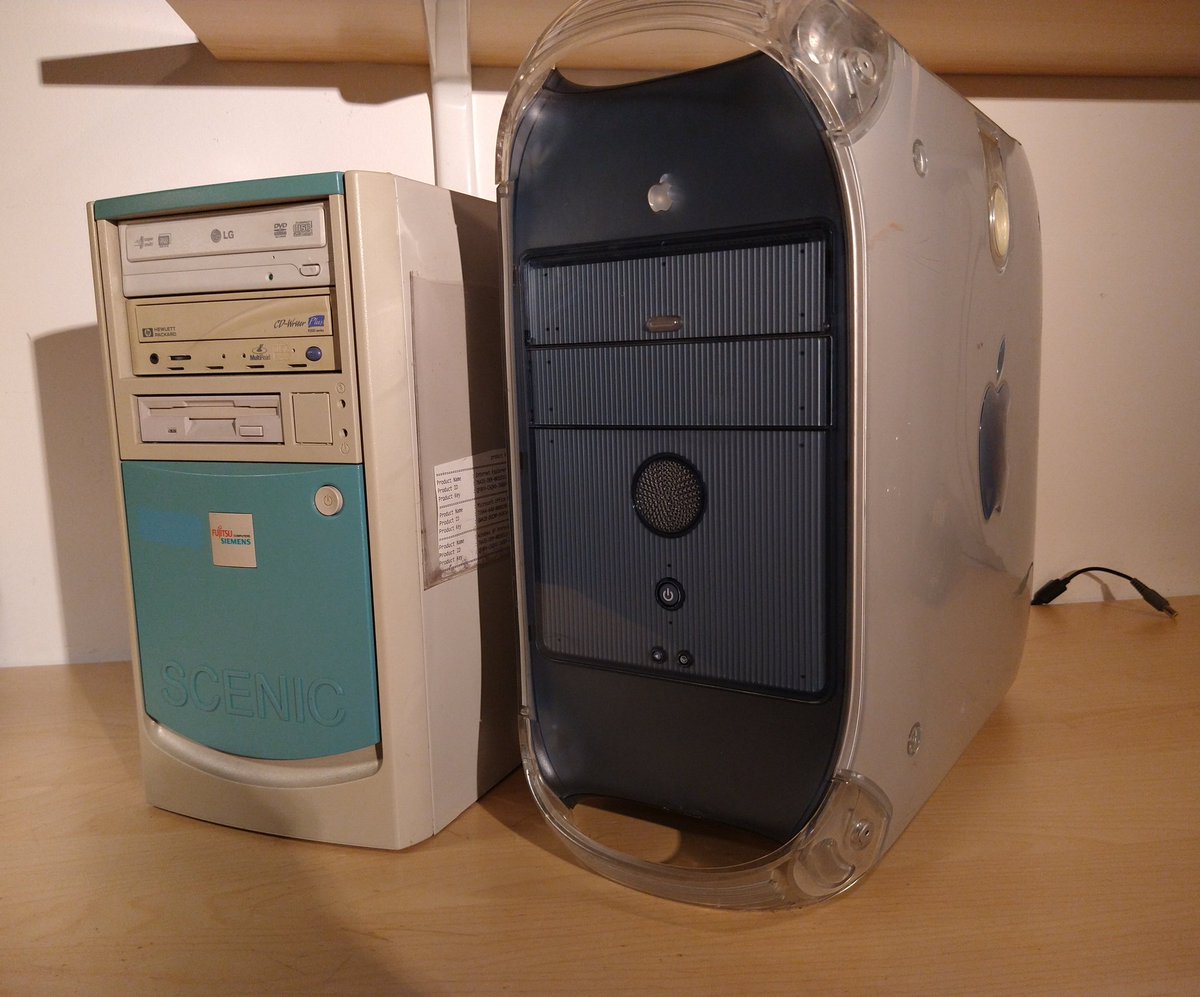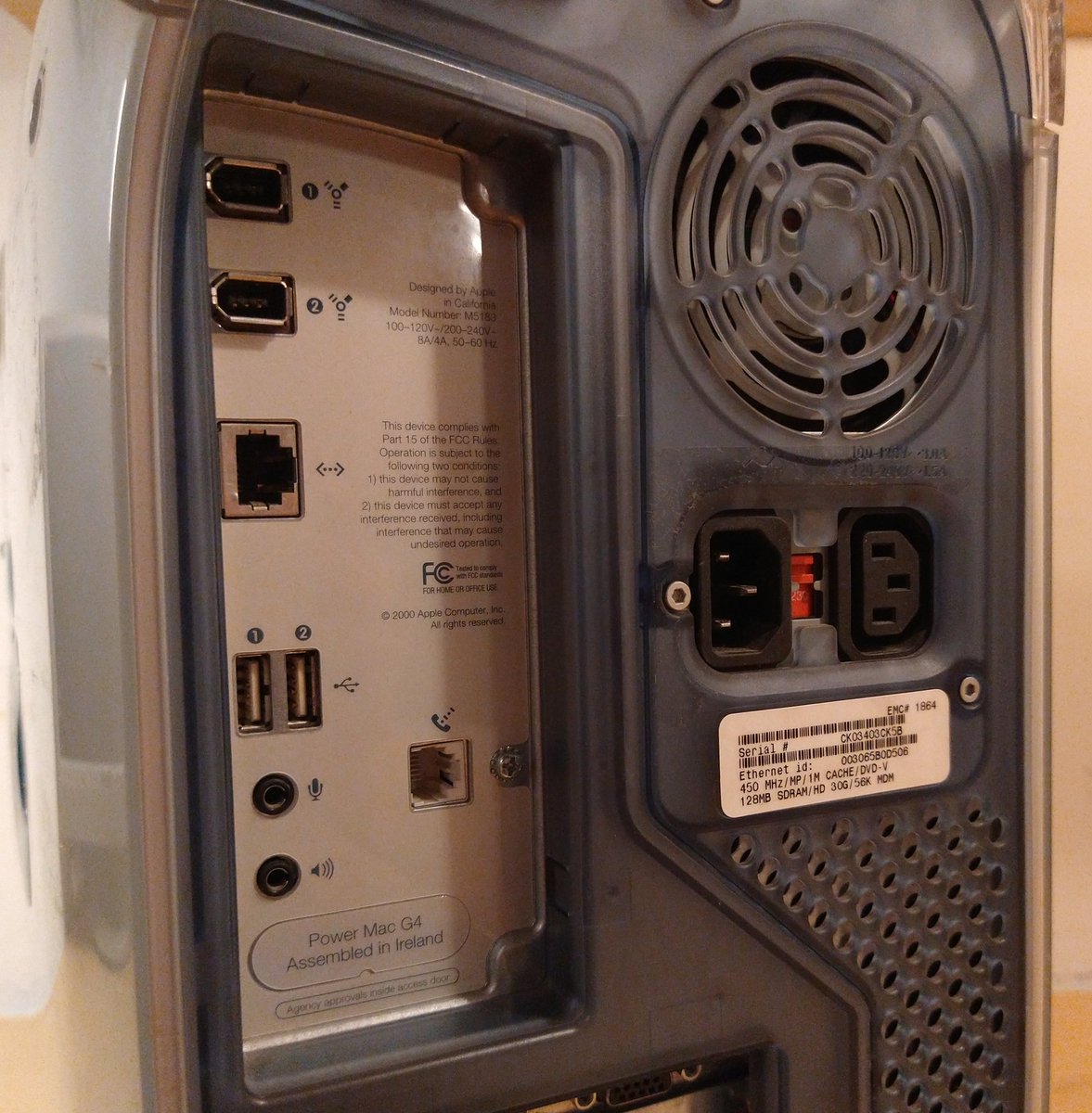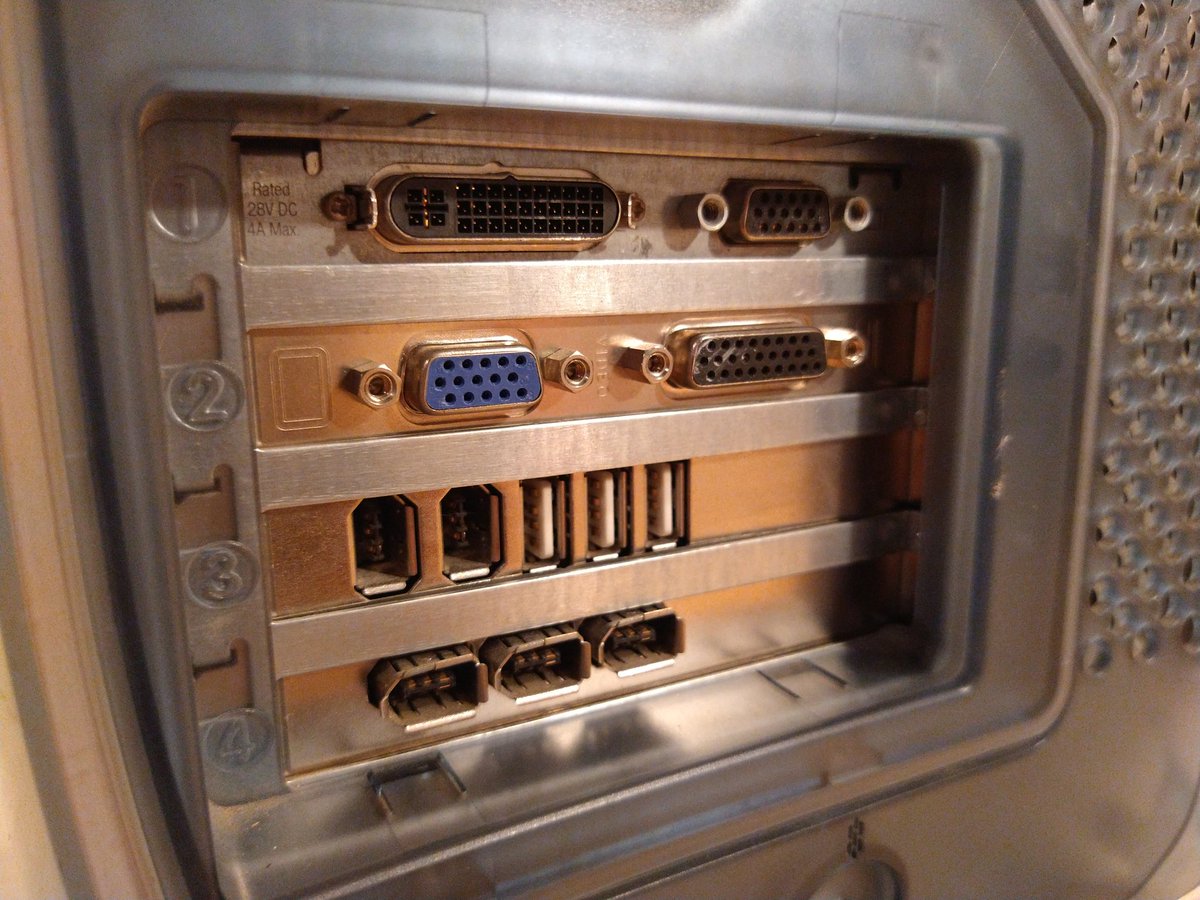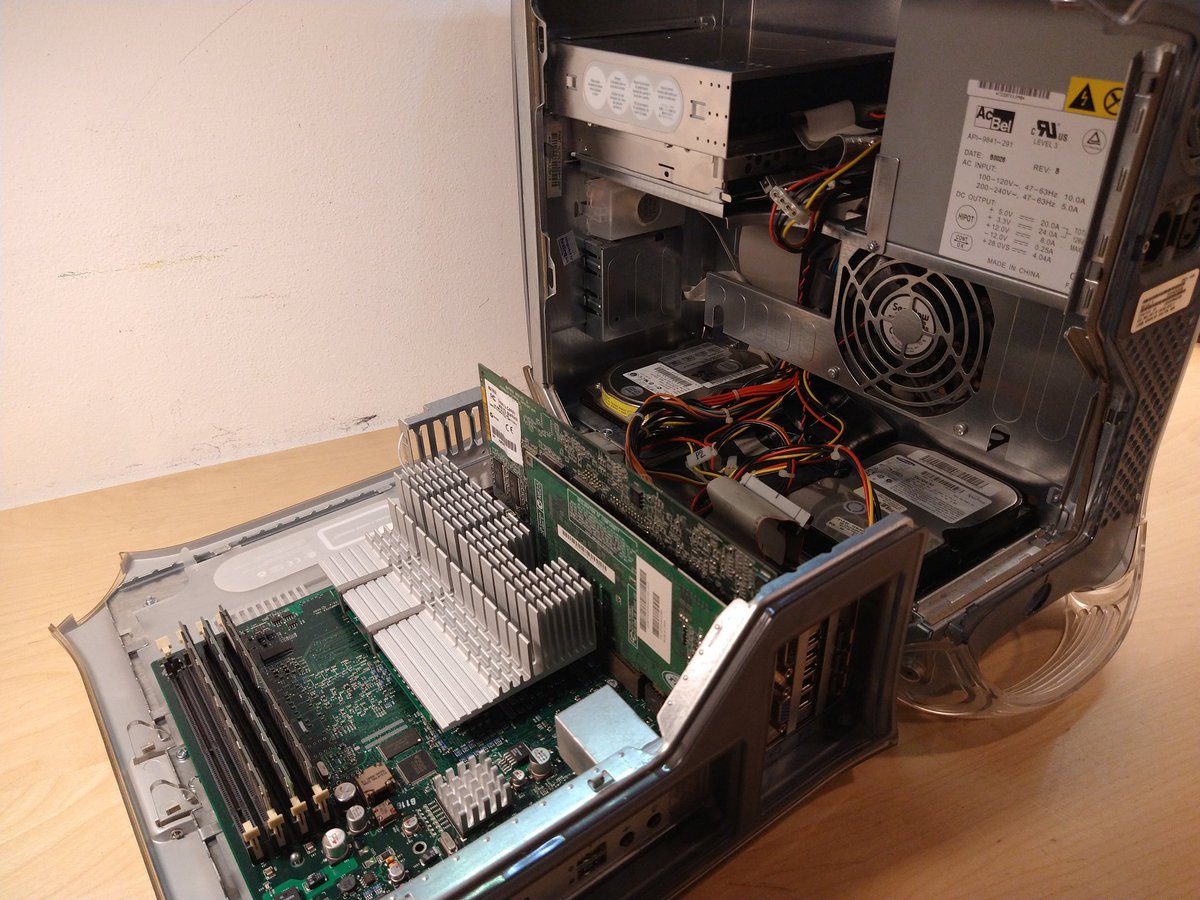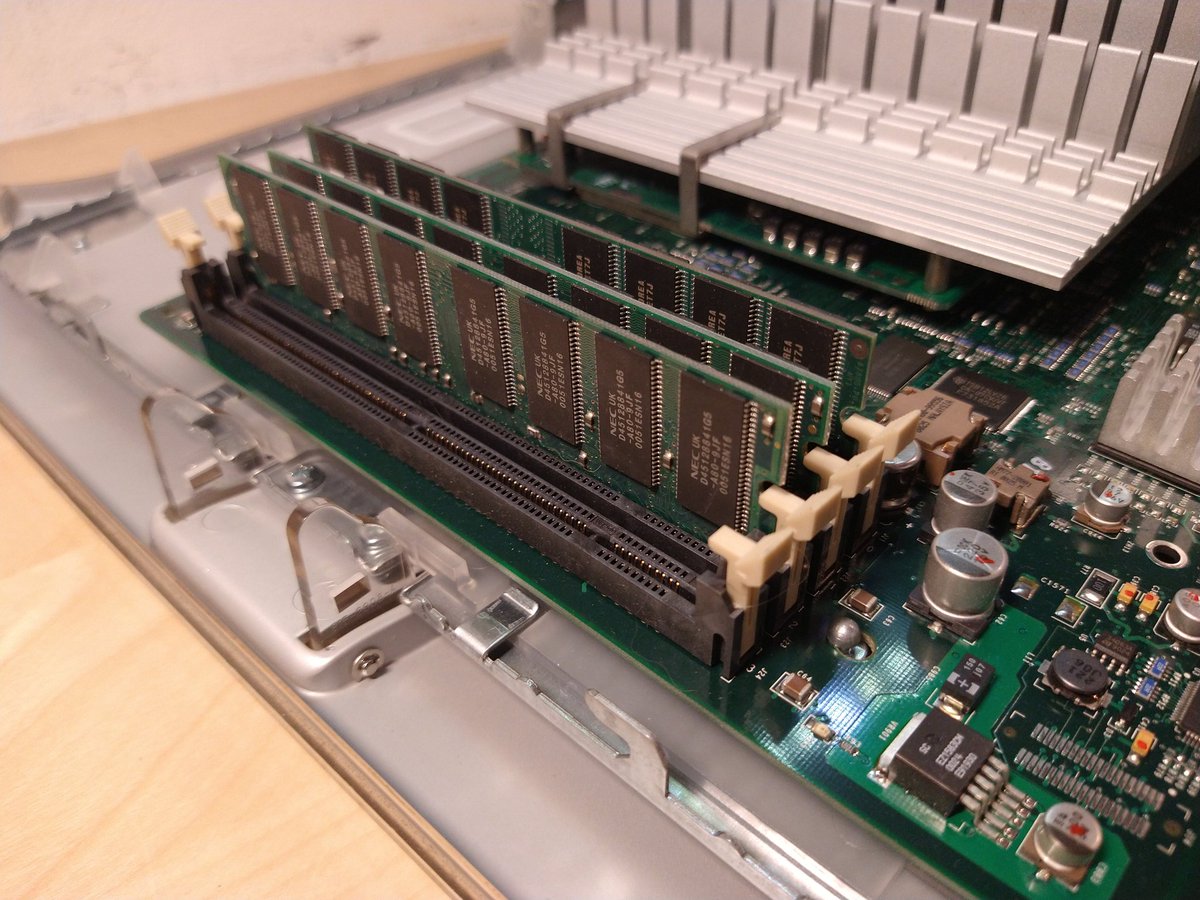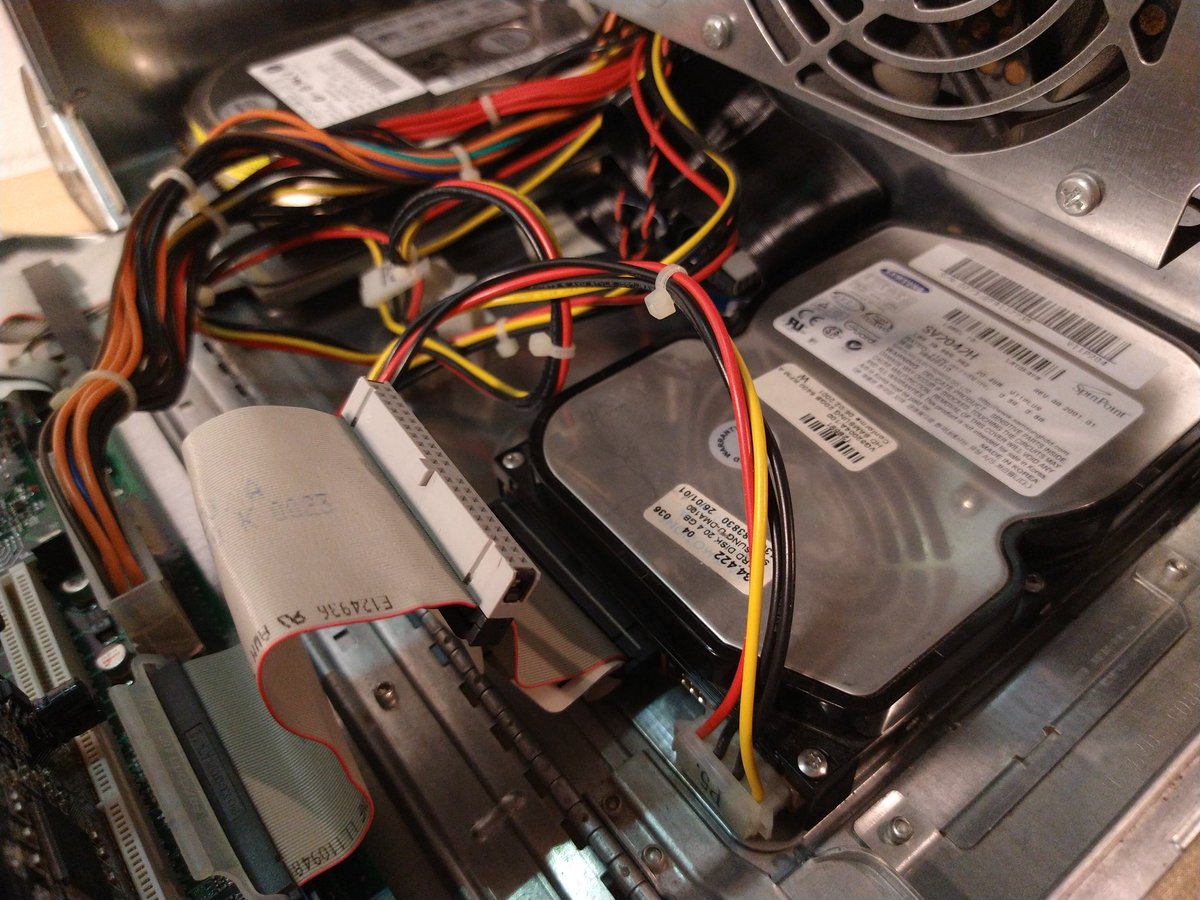Today we& #39;ll be taking a look at something pretty interesting: this PowerMac G4!
I actually wanna cover this computer in a video some day, so this thread will be pretty helpful to organise some of the things I want to cover in that video.
Now, since this is an Apple device there will definitely be a bunch of people who are interested in these computers purely because of their design, and while there& #39;s nothing wrong with that... that& #39;s not really why I find this computer fascinating.
That being said, it& #39;s still interesting to compare this machine to a PC of the same era, especially since this is the first desktop mac of my collection.
Though, as much as the usage of plastics instead of metal (on the outside at least, there is still a metal cage inside the machine of course) is appreciated, the "cool" factor quickly wears off once you realise just how prone to scratches the darn thing is.
There are definitely a lot of differences between those two machines, that& #39;s for sure. But I& #39;m sure you know what those differences are, everyone has covered those! Let& #39;s take a look at what the PowerMac shares with PCs of the era instead.
This is the rear of the machine. The ample usage of plastics continues over here, except for the space used by the expansion cards and the *surprisingly* large hole for the I/O ports.
And no, the I/O plate isn& #39;t removable. While this case *looks* like it could fit a standard microATX motherboard... Well, it can& #39;t. Not without modification, at least.
Here are the ports built into the motherboard. Unlike the earlier PowerMac G3 (blue and white) the two USB 1.1 ports use different buses, that way speed was improved.
I mean, it& #39;s still just USB 1.1, so don& #39;t expect much in terms of speed.
I mean, it& #39;s still just USB 1.1, so don& #39;t expect much in terms of speed.
This is also where we find the label containing the specs of this computer (at least before it was upgraded). More on that later...
There are also two Firewire ports (which was unusual at the time, though in the mid-00s standard PCs began to include FireWire ports too).
And at the front of the case there& #39;s a built in speaker, which is pretty handy.
And at the front of the case there& #39;s a built in speaker, which is pretty handy.
Here& #39;s where it starts to get interesting: the expansion slot area.
The top card is the main video card, and, unlike earlier "old world" macs, it uses standard VGA, which means that this computer can use plain old VGA monitors *without* an adaptor.
There& #39;s also a weird roundy port next to it... more on that later.
There& #39;s also a weird roundy port next to it... more on that later.
The other expansion cards are specific to the computer I have here: going in reverse order there& #39;s a USB 2.0/FireWire card I added, a FireWire card and a weird card with a... VGA port? And what& #39;s that connector beside it?
The mystery deepens! What IS inside this powermac anyways?
...
Yeah ok, I& #39;m sure you guys know that this computer is super easy to open, but I still wanted to point that out, alright?  https://abs.twimg.com/emoji/v2/... draggable="false" alt="😛" title="Face with tongue" aria-label="Emoji: Face with tongue">
https://abs.twimg.com/emoji/v2/... draggable="false" alt="😛" title="Face with tongue" aria-label="Emoji: Face with tongue">
Honestly though, as a vintage computer collector, I wish more computers were this easy to open. Makes it SO much easier to inspect when considering whether to buy it or not.
Anyways, let& #39;s look inside!
Oh hey, standard PC100 SIMMs!
According to the label on the rear this computer was ordered with 128MB of RAM, but there are 512MB in here, so it was upgraded at some point.
According to the label on the rear this computer was ordered with 128MB of RAM, but there are 512MB in here, so it was upgraded at some point.
Which, I mean, ok, we know that it has been upgraded already just by looking at the expansion cards on the rear, but this is another good indication.
Oh hey, standard IDE hard disks!
Whoever had this computer before me removed the original HDD... and its caddy, unfortunately
Whoever had this computer before me removed the original HDD... and its caddy, unfortunately
Thankfully Apple gave you 2 more drive caddies in the case. I& #39;d still like to have the other one available, though :/

 Read on Twitter
Read on Twitter
